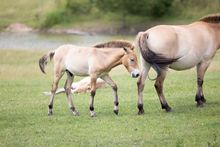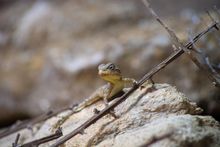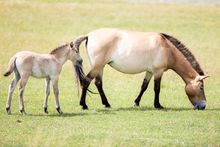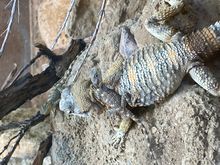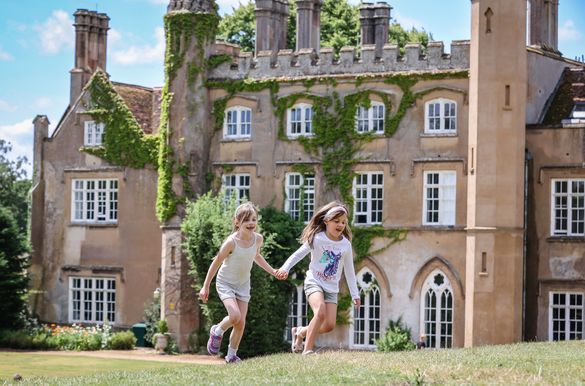 03 Aug 2023
03 Aug 2023
Tags: Marwell Zoo, zoo, family days out, Winchester, Hampshire, Ticket offer

We’ve got a fantastic August offer set to help as many people as possible connect with nature this summer!
For £75 guests will be able to buy a ticket that admits up to five people for a full day of family adventures (excluding Thursday Fun Days) during August, that’s just £15 per ticket!
This represents a saving of more than £40 for a family of two adults and three children!
Our August “Five for £75” family ticket is designed to give families a more affordable way to enjoy the zoo.
If that’s not enough to get you excited about a visit to the zoo, everyone that buys a family ticket during August will be entered into a free prize draw!
Five entrants will be selected at random to win membership for the family members they visited the zoo with, giving them a year’s worth of visits to enjoy together!
With lots of new arrivals at the zoo over the last month, we’re confident families will find lots to see and do!
Among the new arrivals are a Przewalski’s foal and blesbok calf that arrived within days of each other!
Our latest Przewalski’s foal arrived overnight and was found by keepers on the morning of Tuesday 27 June.
Born to mother Speranza and father Nogger, the Przewalski’s foal can be seen in our valley field harem along with brother Basil, who was born in 2022.
The new foal already has a playmate in the form of youngster Takhi, who was born in April and is male.
Erin Luter, Assistant Animal Keeper, said “The new arrival is healthy and strong and can often be seen running around with Takhi.”
Przewalski’s foals weigh between 25 and 30kg at birth. They can stand and walk within an hour of being born, and within a few weeks are able to start grazing.
Our Hoofstock team were delighted to welcome another new addition the following day when a blesbok calf was born.
Mother Harmony and father Blas welcomed their new arrival on 28 June. Blesbok calves are often able to walk and follow their mothers within minutes of being born.
Guests can see this new arrival in the blesbok paddock, which is next to the clouded leopard enclosure.
Blesbok are native to southern Africa where they graze in herds on open grassland. They travel in single file lines to watering points creating paths as they go.
In the wild these animals feed mostly in the morning and afternoon resting in shady spots during the mid-day sun.Our new red panda, Tashi, arrived from Paradise Wildlife Park the following day on 29 June and has settled in well.
Guests also have the chance to see five starred agama hatchlings in the Arid Lands area of the zoo close to Café Graze.
Starred agama parents do not feed or care for their young, who feed themselves from birth.
At Marwell juveniles are fed pea aphids, fruit flies, tropical woodlice and small crickets as they are primarily insectivorous. They will also eat fruit and plants. Nectar and pollen rich flowers are a particular favourite.
Dan Garrick, Herptiles Team Leader, said: “The parents go into breeding mode in spring, when they are interested in displaying, mating and looking for nesting sites. At this point last year’s young start to get in the way and in many lizard species living in the wild, the young would disperse to other areas, so this process is normal. Housing the hatchlings with the adults allows interactions between them that under artificial incubation and rearing circumstances you wouldn’t see. For example, the young that hatched in 2022 would often remain by or on the adults.
This behaviour is something that may occur in the wild and it is clear from our family housing that all animals can access food, grow and go through brumation (a period of dormancy during colder conditions) together. We have four juveniles from last year that are doing well. They are too small to go into Thriving Through Nature just yet, but after a summer of feeding and a winter cooling period they should be ready in spring 2024.”
Thriving Through Nature, the new upcycled habitat that has been created in the zoo’s old tropical house also opened on Friday.
The new space gives guests a chance to learn about connecting with nature to benefit animals, plants and themselves.
For more information about our animals, news and full terms and conditions for our 5 for £75 family ticket offer visit www.marwell.org.uk.
Notes for editors:
Five for £75
- Full terms and conditions are available at www.marwell.org.uk
- Offer is only valid during August and must be purchased online.
- Groups using these tickets must be made up of a maximum of two adults and a minimum of one child.
- This offer is aimed at reducing costs for families during the cost-of-living crisis.
Additional Przewalski horse info
- All of the Przewalski’s horses alive today are descended from just 12 captive individuals after the population in the wild was declared extinct.
- In the wild, Przewalski’s horses typically live in harems consisting of a group of females and one stallion. Foals will stay with the harem until they are 2-3 years old.
- These horses were extinct in the wild from 1969 until 2008, so every birth is exciting for this Endangered species.
- Males will then leave the harem and form bachelor groups consisting of other young males and unsuccessful older stallions.
- When they are around five-years-old, males attempt to form their own harems, either taking over an already established harem, stealing individual females from a rival group or joining young females leaving their natal harem.
- Przewalski’s horses are now listed as endangered on the International Union for the Conservation of Nature’s (IUCN) Red List of Threatened Species with populations increasing thanks to zoo breeding programmes.
- Marwell Zoo was instrumental in returning these wonderful horses back to the wild where populations are now increasing.
- In the mid-18th century wild Przewalski’s horses would have been found from the Russian Steppes east to Kazakhstan, Mongolia and northern China.
Additional blesbok info
- Both male and female blesbok have ringed horns with distinctive white faces and brown bodies. In the wild, males use their horns to “clash-fight” to establish their dominance.
- Calves are able to follow their mothers within 30 minutes of being born and wean around four months of age.
- Historically blesbok would have been hunted by lions, leopards, spotted hyenas, African wild dogs and cheetahs. They were also hunted by European settlers and numbers dwindled to around 2,000 by the late 19th century but they have made an impressive recovery since becoming a protected species.
- It is thought there are now as many as 55,000 living in protected areas and wildlife ranches and the population continues to increase.
- Blesobok numbers continue to increase thanks to conservation efforts and the species is now classified as Least Concern on the International Union for the Conservation of Nature’s (IUCN) Red List of Threatened Species.
Additional starred agama information
- In the wild, starred agama can be found in the Mediterranean, Egypt and the Near and Middle East. They can tolerate extremely hot weather but also experience cold winters.
- Females lay between three and 12 eggs per clutch and the species is often found in coastal or mountainous regions.
- Starred agamas are listed as being of Least Concern on the IUCN red list but populations in Egypt have recently been declining.
- Starred agamas are usually light or dark brown or grey, but dominant males may be brightly coloured and often have reddish-brown, turquoise, and pale brown markings.
- Starred agamas usually breed between March and early June. They dig a nest in the ground to lay their eggs in. Females may lay up to two clutches of eggs a year.



